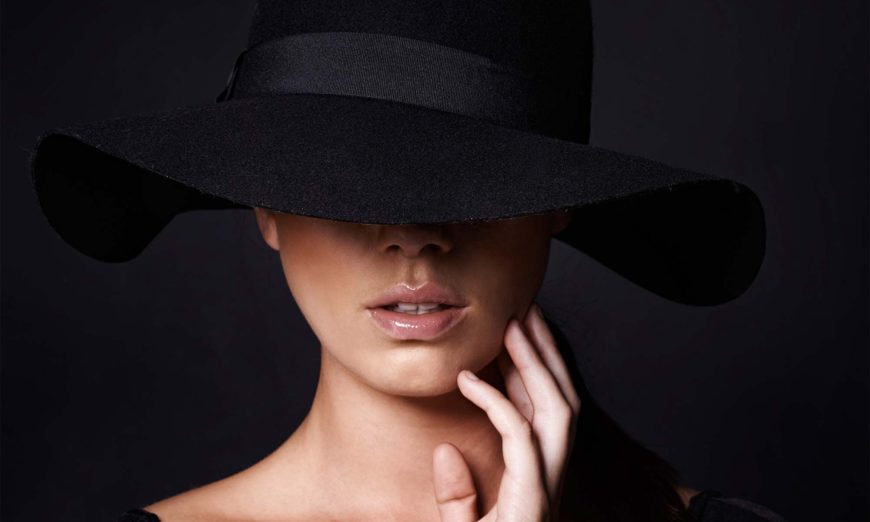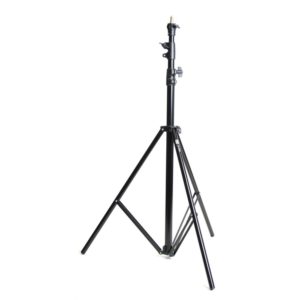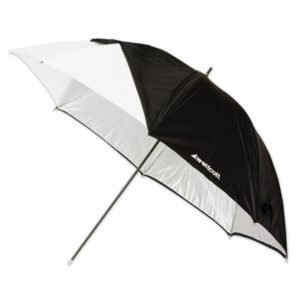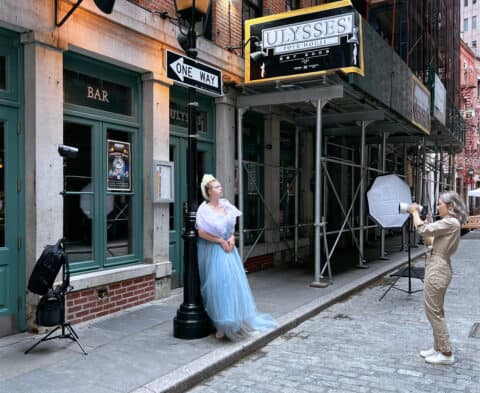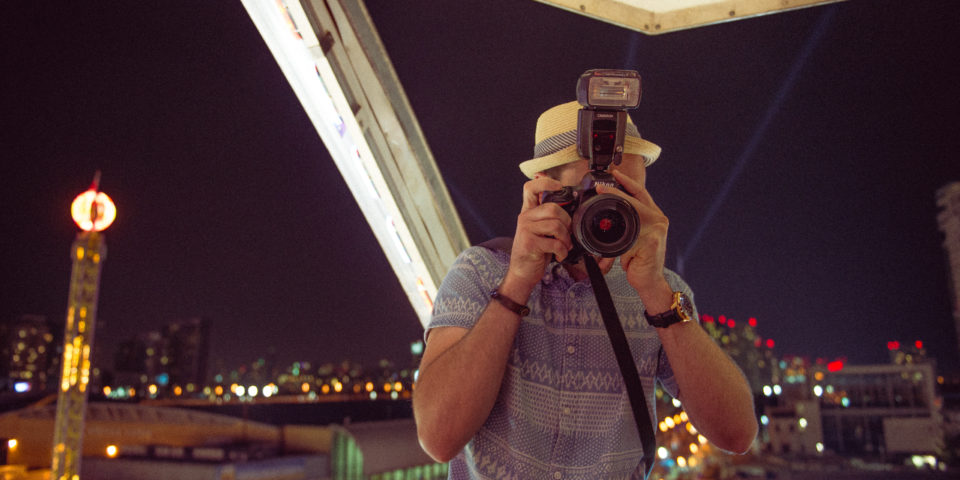Off-camera flash is the first step in managing light yourself. It’s a significant step where you are the boss and no longer a slave to the ambient light, and it’s a major step in becoming a better photographer.
The fear is that it’s really hard to do, really expensive and horribly time consuming. It’s not hard, and not time consuming. The expense level is your decision, but in this article, I am going to reference some options available from your local Henry’s store that will get you going without breaking the bank and still provide you gear that will serve you well for an extended period of time.
Basic OCF Kit
You will need five basic pieces to get started with off-camera flash. Unsurprisingly, one of those pieces is the off-camera flash itself. Then you will need a light stand, a tilting umbrella bracket, a basic umbrella and a sandbag. Let’s look at each of these pieces individually.
The Off-Camera Flash
This is often referred to as a hot shoe flash, which is factually accurate, but our goal is not to use it in the hot shoe. Here’s some great news. Most camera bodies have a pop-up flash and the most useful function of these units, in most cameras, is to act as a controller for an off-camera flash. They use a pulse of light, that looks like a flash but is not, to communicate exposure information to the off-camera flash in real time. Check your specific camera manual to confirm that this is possible. Except for the lowest entry-level products, generally this function is built in. Then you add the off-camera flash that works with your system. These flashes are available from the camera maker, and sometimes from third parties. My preference is the maker’s flash because you know it’s going to work, but this is usually the most expensive option. There are alternatives. You need to find a maker that precisely supports your camera system. I use and recommend flashes from Metz and Phottix. I know that they work, are built well and will last. I have Metz units that work perfectly despite being over thirty years old.
The Light Stand
You need a place where your flash, umbrella holder and umbrella are going to be stable and reliable. A good light stand will last decades. Most people are well served by the stick-style light stands, called this because they look like a stick. They can be found in a variety of price ranges and quality levels. I am happy to recommend Manfrotto light stands, but I have also been very pleased with a Cameron stand that is very well built for the money. I would suggest purchasing a stand that will go taller than you think that you will need. This will provide thicker walled tubing that will not flex or bend. Aluminum is fine, unless the walls are too thin. I also strongly advocate for an air-cushioned light stand because it helps prevent disaster if you do not lock the sections properly. The Cameron LS-10AC is an excellent entry level stand that holds up under reasonable use.
The Umbrella Bracket
The bracket is the most dangerous place to underspend. It’s the thing that holds your flash, and your umbrella and attaches everything to the light stand. To my chagrin, I have seen too many flashes tumble to the ground because a poor bracket was purchased. You want a bracket that fits a standard stand pin (5/8”), has a cold shoe so the pins on your flash’s foot do not short out, and has a shoe that locks your flash in place. The shoe lock is the biggest failure point in brackets. You also want a bracket that is drilled to take an umbrella shaft, preferably at a minor upward angle, because the weight of the umbrella tends to pull the assembly downwards. I use Manfrotto brackets nearly exclusively. I have a couple of Lastolite brackets that are excellent as well, but they are the old-style ones and have changed in the last couple of years. I, like many folks, have purchased third-party brackets and every single one has failed in a critical area during testing, specifically not gripping the flash properly. Those got returned or junked because saving $20 on a bracket is not worth the loss of a $400 flash. Your Henry’s sales professional can order you the Manfrotto MLH1HS. Not the cheapest, but certainly topline and reliable.
The Umbrella
When you start looking at umbrellas, it’s easy to become confused by the sheer volume of choice. Let’s presume that you only want to buy one. That means that you want a medium-large umbrella that can be used for most subjects. This implies an open diameter of 42” to 48”. This is large enough to make nice light, and small enough that it can be used in an average home. Next look to the construction. My preference is a heavy-duty aluminum shaft, with a tapered end supporting fibreglass rods to extend the umbrella. The fibreglass keeps the weight down and transports more easily because it doesn’t bend the way aluminum struts will.
When it comes to finishes, I recommend a minimum two-in-one umbrella. This means a two-level fabric kit. The inner umbrella will be white, and there will be a removable outer cover that is black on the outside and lined with silver. With the cover removed, you have a white “shoot-through” umbrella designed so the flash fires through the umbrella to soften and spread the light out. This is an excellent option when you must deal with larger areas and larger groups. With the cover in place, the translucency of the white liner, is made into a 100% reflecting surface by the silver lining of the black outer case. The outer casing is black to prevent the creation of other sources of light or reflectance that could otherwise impede your image. Most umbrella fabrics are nylon, some are coated with plasticizers to make them more weather resistant and to facilitate cleaning.
The last thing to consider is the umbrella shape. A parabolic umbrella focuses the light and is sensitive to flash to bowl distance. A non-parabolic umbrella is much more forgiving and is usually significantly less expensive, and a better first umbrella for most. I do not recommend all white umbrellas or umbrellas without a removable cover as your first purchase. You give up versatility for very minor cost savings. The F.J. Westcott company has been manufacturing umbrellas for a very long time and produce high quality and reliable products. The model 2016 is 45” in diameter, has a removable cover, fibreglass ribs and a 7mm aluminum shaft. It will do a terrific job.
The Sandbag
Simple stuff. A canvas or plasticized bag that you fill with sand and drape over the leg of the light stand to keep it from tipping over. This is the piece most often ignored, and most lamented when needed.
Shooting
To get started, set your umbrella about 45 degrees off the line between your camera and subject. Raise it on the stand so you can angle it down towards your subject like it was the sun coming through a skylight. Move this as close to your subject as you can without it being in the frame. Set your camera flash setting to TTL and shoot. Move the light a bit for different looks. Lighting is a game of inches, but now that you have the right kit, you can get to work improving your photography.
Until next time, peace.
